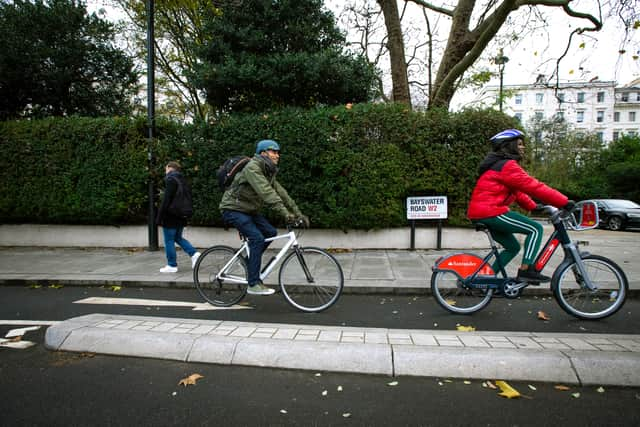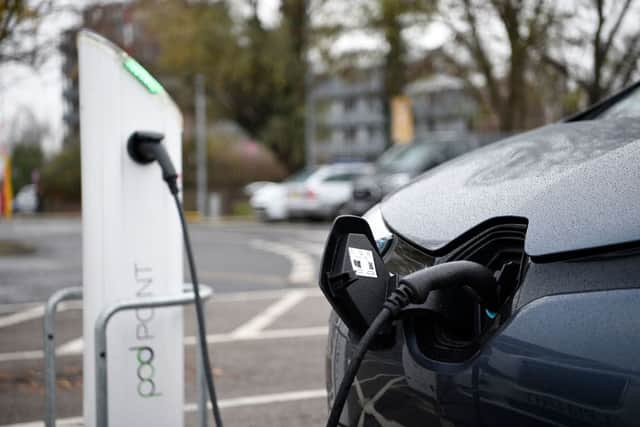TfL Congestion Charge 20 years anniversary: Seven facts you didn’t know
and live on Freeview channel 276
The Congestion Charge has become such a part of London living that it’s hard to imagine a time before its inception on February 17, 2003.
The Ultra Low Emission Zone (ULEZ) followed - planned during Boris Johnson’s time as mayor and introduced when the post was held by Sadiq Khan, who is expanding its boundary to cover Greater London from August 2023.
Advertisement
Hide AdAdvertisement
Hide AdHere are seven facts about the Congestion Charge that you may not know:
Immediate effect
In the first year that the charge came into effect, congestion within the zone fell by 30% as drivers ditched their cars for other modes of public transport. The big beneficiaries were the bus services in central London, with passengers on these routes up by 33%.
Switch to two wheels
The Congestion Charge has helped to make cycling more attractive to Londoners, with the number of people taking to two wheels up 137% since the start of the millennium. The money raised from the £15 a day charge has enabled Transport for London (TfL) to invest in more sustainable modes of transport, such as cycle lanes and improvements in buses.


Western extension
The zone in which the Congestion Charge operates was extended west in February 2007 to take in the areas north and south of Hyde Park and as far west as Earl’s Court. However, the western extension was scrapped by then-London mayor Boris Johnson after a public consultation found that 62% were in favour of removing the expanded zone.
Christmas break
Advertisement
Hide AdAdvertisement
Hide AdEven the Congestion Charge gets a day off from time to time, with the zone not being enforced from Christmas Day to January 3 this year. The ULEZ also took a break on December 25, but was back into enforcement from Boxing Day through the rest of the Christmas period.
Discount introduced
The Ultra Low Emission Discount (ULED) was introduced in 2013 to allow electric vehicles, some plug-in hybrids and any vehicle that emits 75 g/km or less of CO2 to use the zone for free. However, in 2021 the discount was scapped and changed to the Cleaner Vehicle Discount, applying only to strictly electric vehicles. This discount is to be similarily ditched from 2025 as Londoners are encourged to further make use of public transport and move away from persoanl four-wheel vehicles.


Cost of congestion
Despite the successes of the London Congestion Charge, drivers in the capital spent an average of 149 hours in gridlock in 2019, with a cost to the economy of £4.9 billion. However, TfL states that there would have been an additional three million car journey across the capital to 2019 had the levy not been introduced. It has undoubtedly reduced traffic and saved hours of lost productivity.
Sustainable changes
The introduction of the Congestion Charge has encouraged 10% of journeys to be made by more sustainable means such as walking, cycling and public transport. Along with the introduction of the ULEZ in 2019, this has helped to reduce the levels of harmful pollutants in the capital which can cause lung damage and increase dementia risks.
Comment Guidelines
National World encourages reader discussion on our stories. User feedback, insights and back-and-forth exchanges add a rich layer of context to reporting. Please review our Community Guidelines before commenting.
